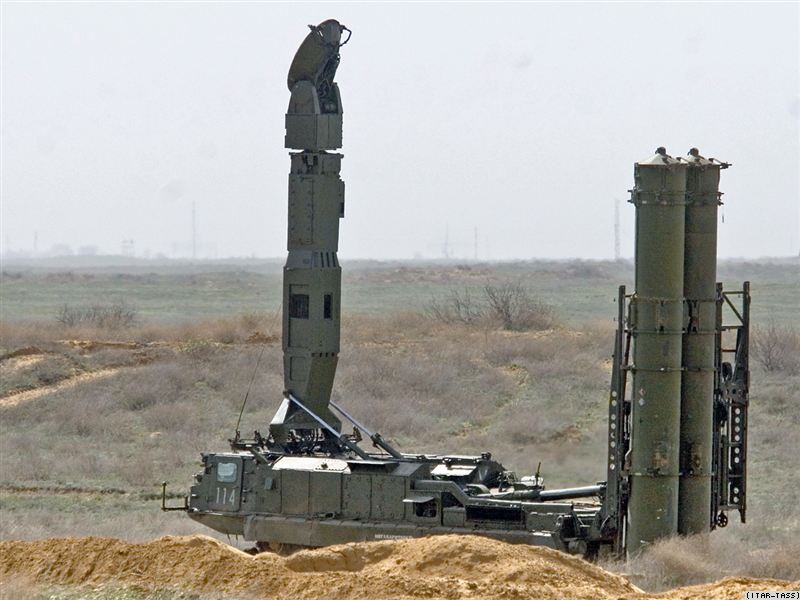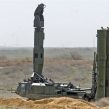
Armenian General Threatens Azeri Economic Facilities
Publication: Eurasia Daily Monitor Volume: 9 Issue: 205
By:

In a little-noticed development last month, a senior Armenian military official has announced Armenia’s willingness to use military force against Azeri economic facilities in the event of an outbreak of war in Karabakh. On October 15, Major General Artak Davtyan, Chief of the Operative Department, Armenian Armed Forces, made an oblique reference to Armenia’s S-300s which it recently acquired from Russia as a measure of retaliation against Azerbaijan. During a press conference, General Davtyan told journalists on October 15 that the Armenian Armed Forces consider long-range missiles a priority and, if necessary, are ready to attack the enemy’s economic facilities, particularly gas and oil pipelines (https://www.tert.am/en/news/2012/10/15/artak-davtyan/). Armenia first acknowledged receipt of the S-300s in December 2010, and a few days later showcased a video of the missiles being tested (see EDM, January 11, 2011). The surface-to-air missiles went on display to the public in January 2011 when they were featured during a military parade (https://www.azatutyun.am/content/article/24335604.html).
Immediately following General Davtyan’s comments, Azerbaijani military officials in Baku responded, noting the economic impact Armenia’s actions would have, as well as Azerbaijan’s ability to protect its threatened assets. According to Colonel Eldar Sabiroglu, a spokesman for Azerbaijan’s defense ministry, “Firstly, Azerbaijan’s oil and gas fields are being used jointly with the biggest states and companies. Secondly, Azerbaijan is able to protect its oil and gas fields, all measures needed for missile defense are in the focus of attention. The enemy should understand that the new missile systems of Azerbaijani Armed Forces can strike any strategic facility of Armenia” (https://news.az/articles/politics/70257).
At the same time that the statement by the Armenian military appeared, information was released by Yerevan announcing that Armenia had actually placed Russian-made S-300PS surface-to-air missiles within seven kilometers of the border with Karabakh. Information released by IMINT & Analysis, a US-based open-source military analysis group, stated that according to Google Earth satellite imagery of air defense systems, the deployment of the highly mobile S-300PS complexes would allow Armenia, with Russian assistance, to cover the entire air space over the occupied territories of Azerbaijan. “[T]he placement of Armenian S-300PS batteries adjacent to Karabakh, represent significant occurrences potentially impacting various future scenarios in the region,” the source noted (https://www.panarmenian.net/eng/news/127592/).
More importantly, what does this all mean? First of all, the statement by General Davtyan is likely the first instance in recent years of a senior Armenian military officer quite clearly threatening Azerbaijan. At the same time, his statement would also be a direct threat against US and European oil investments since Azerbaijan’s major oil facilities, such as the Sangachal oil terminal and other facilities, are jointly operated in cooperation with western oil companies. Officials in Baku also did not interpret the statements as solely an impulsive statement made by Yerevan, but assumed they were made at the likely urging of Moscow. As Azerbaijan’s defense ministry spokesman Sabiroglu noted, “[Armenia’s] strength and sense do not belong to itself,” which is a diplomatic way of indicating that Yerevan’s posturing is directly backed and possibly inspired by Russian military and political guarantees (https://news.az/articles/politics/70257).
With the peace process in a virtual deadlock, the recent statements by such a senior ranking Armenian defense official and the subsequent announcement of the deployment of the S-300s near the Armenian-occupied territory of Karabakh stand to further inflame regional tensions. While Russian forces based in Armenia have had S-300s in their hands for over ten years, the actual transfer of the S-300s to the control of Armenian forces is an entirely different matter. Moreover, the announcement that they have been deployed near the border with Karabakh is a destabilizing move. The highly mobile missile system can easily be redeployed, but in the event of an armed conflict, its current location would invite a potential retaliatory response from Azerbaijan on a target within Armenia proper. Such a response is legally vastly different than attacking a mobile battery within the disputed Karabakh territory, which is internationally recognized to be inside Azerbaijan.
Finally, these developments are occurring against the backdrop of a complete absence of US activity in the South Caucasus as Washington has largely deferred its role in the Karabakh peace talks to Moscow. With the transfer of S-300s to the control of Armenian forces next to Karabakh, and the Russian sale of S-300s to Azerbaijan in mid-2011 (Armenianow.com, June 30, 2011), Moscow is now both the lead negotiator in the talks over the future of Karabakh and the supplier of destabilizing weapons to both Yerevan and Baku. This stands to leave Moscow as the sole arbiter of regional stability in the South Caucasus, both in the negotiating room and on the battlefield.




